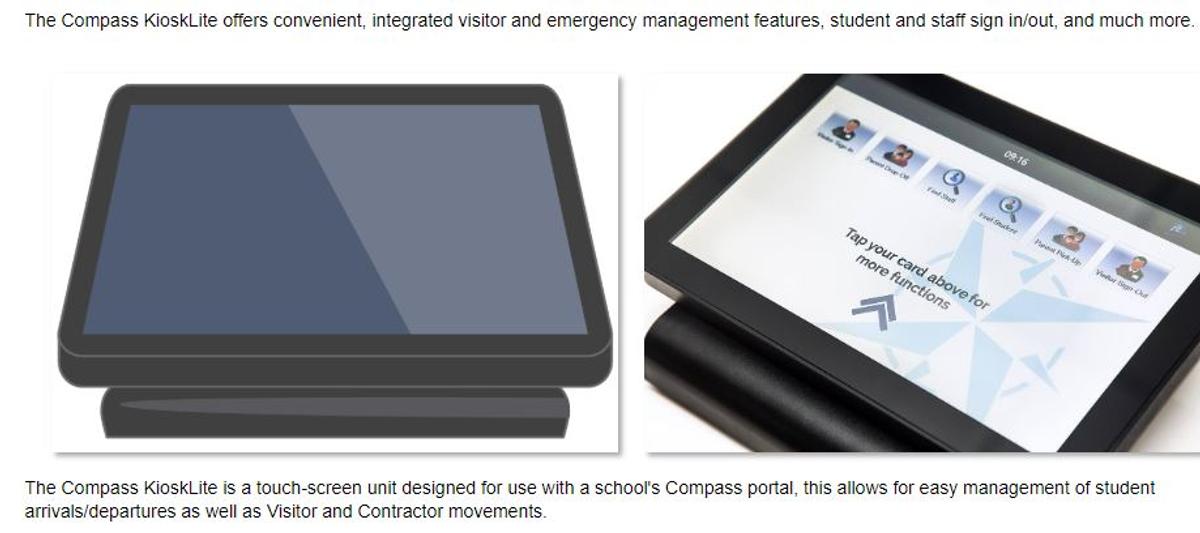News

COMPASS
Starting on the 5th May our school started using Compass as our Parent Portal. You will have access to up-to-date and meaningful information about our school and your child. Please note not all features will be available when you first access Compass. Modules will be released gradually to our parent portals. As modules become enabled parents will be notified.
It is most important that you keep your Username and Password secure, just like your bank account details. They should not be shared with anyone, including your children.
You are now able to login to Compass using your unique Username and Password which was sent to you via email. Please take the opportunity to login. If you need assistance or have any questions, please contact our School Office on 6777 2328 during school hours or email spwadmin@arm.catholic.edu.au
COMPASS - Parent Portal
1. Search for “Compass School Manager”
itunes Apps Store - Android App Store - Google Play.
2. Search for Walcha (search for the town, St Patrick's will bring up too many school results)
3. You will be asked to put in your individual login details.
4. You will then be taken to the homepage of the APP
5. If you haven't already logged into the parent portal on the internet, you will be prompted to update your email and mobile number.
6. Once you have completed all these steps school notifications will be sent straight to your phone.
* If you have lost your Compass Login Username and Password, please contact our office so we can supply you with your login details.
Compass Kiosk
Overview
The Compass Kiosk is a touch-screen unit designed for use within the school's administration office.The Kiosk provides an integrated online terminal for student late arrivals and early departures, visitors to the school and various other functions.The Kiosk integrates with Compass, including updates to attendance information, emergency management data and the registration of visitors and contractors; this integration greatly reduces the administrative time required and alleviates the use of manual processes (i.e. sign-in/out books etc).
Raising resilient problem solvers- by Michael Grose
Personal problem-solving is an under-rated skill shared by resilient children and adults. First, identified alongside independence, social connection and optimism by early resilience-researchers in the US, the ability to solve your own problems is the basis of a child’s autonomy and self-efficacy.
When parents solve all children’s problems we not only increase their dependency on adults, we also teach kids to be afraid of making mistakes and to blame themselves for not being good enough. As I noted in my book Anxious Kids, this is fertile ground for anxiousness and depressive illness.
So how can we raise kids to be courageous problem-solvers rather than self-critical, low risk-takers? Here are six practical ideas to get you started:
Turn requests for help into problems for kids to solve
Kids get used to bringing their problems to parents to solve. If you keep solving them, they’ll keep bringing them. “Mum, Sarah’s annoying me” “Dad, can you ask my teacher to pick me for the team?” “Hey, I can’t find my socks!” It’s tempting if you are in a time-poor family to simply jump in and help kids out. Alternatively, you can take a problem-solving approach, cuing them to resolve their own problems and take responsibility for their concerns. “What can you do to make her stop annoying you?” “What’s the best approach to take with your teacher?” “Socks, smocks! Where might they be?”
Ask good questions to prompt problem-solving
A problem-solving approach relies on asking good questions, which can be challenging if you are used to solving your child’s problems. The first question when a child brings you a problem should be: “Can you handle this on your own?” Next should be, “What do you want me to do to help you solve the problem?” These questions are not meant to deter children from coming to you. Rather to encourage and teach them to start working through their own concerns themselves.
Coach them through problems and concerns
Imagine your child feels they were unfairly left out of a school sports team by a teacher and asks you get involved. The easiest solution may be to meet with the teacher and find out what’s going on. You may or not resolve the problem but in doing so you are teaching a child to become dependent on you. Alternatively, you could coach your child to speak to the teacher themself and find out why they were left out. Obviously, there are times when children need their parents to be advocates for them such as when they are being bullied, but we need to make the most of the opportunities for children to speak for themselves. Better to help your children find the right words to use and discuss the best way to approach another person when they have problems. These are great skills to take into adulthood.
Prepare kids for problems and contingencies
You may coach your child to be independent – walk to school, spend some time alone at home (when old enough), catch a train with friends – but do they know what to do in an emergency? What happens if they come home after school and the house is locked? Who do they go to? Discuss different scenarios with children whenever they enter new or potentially risky situations so that they won’t fall apart when things don’t go their way. Remember, the Boy Scouts motto – “”Be Prepared!
Show a little faith
Sometimes you’ve got to show faith in children. We can easily trip them up with our negative expectations such as saying “Don’t spill it!” to a child who is carrying a glass filled with water. Of course, your child doesn’t want to spill it but you’ve just conveyed your expectations with that statement. We need to be careful that we don’t sabotage children’s efforts to be independent problem-solvers with comments such as, “Now don’t stuff it up!”, “You’ll be okay, won’t you?” , “You’re not very good at looking after yourself!”
Applaud mistakes and stuff ups
Would a child who accidentally breaks a plate in your family while emptying the dishwasher be met with a ‘that’s really annoying, you can be clumsy sometimes’ response or a ‘it doesn’t matter, thanks for your help’ type of response? Hopefully it won’t be the first response, because nothing shuts down a child’s natural tendencies to extend themselves quicker than an adult who can’t abide mistakes. If you have a low risk-taking, perfectionist child, consider throwing a little party rather than making a fuss when they make errors so they can learn that mistakes don’t reflect on them personally, and that the sun will still shine even if they break a plate, tell a joke that falls flat or doesn’t get a perfect exam score.
As I’ve often said your job as a parent is to make yourself redundant (which is different to being irrelevant) at the earliest possible age. The ability to sort and solve your own problems, rather than step back and expect others to resolve them, is usually developed in childhood. With repetition and practice problem-solving becomes a valuable life-pattern, to be used in the workplace, in the community and in family relationships.
Michael Grose, founder of Parenting Ideas, is one of Australia’s leading parenting educators. He’s an award-winning speaker and the author of 12 books for parents including Spoonfed Generation, and the bestselling Why First Borns Rule the World and Last Borns Want to Change It. Michael is a former teacher with 15 years experience, and has 30 years experience in parenting education. He also holds a Master of Educational Studies from Monash University specialising in parenting education.
Council of Catholic SchoolParents -eNewsletter
http://ccsp.schoolzineplus.com/newsletter/67613
Apple & Date Bliss Balls
Ingredients
2 cups rolled oats
5 pitted dates
1½ cups dried apple, chopped
3-5 tbsp water
3 tbsp desiccated coconut & more for rolling
1 tsp vanilla
Method
Blend oats in a high-speed blender or food processor until they’re a flour-like consistency.
Add the apple, coconut and vanilla and process. Slowly add the dates and water. Start with 3 tablespoons of water and add more if required. Scoop out the mixture, slightly dampen hands, roll into 20 balls and coat in more coconut.
Chicken fajita roll-ups
Ingredients
½ avocado, mashed
100g cooked chicken, finely chopped
2 tsp our Healthy Taco Seasoning Mix (see recipe)
4 wholemeal tortillas
½ cup reduced-fat cheddar cheese, grated
1 cups lettuce, finely shredded
½ carrot, peeled, finely grated
¼ green capsicum, finely sliced
½ tbsp spring onion, finely chopped
Healthy Taco Seasoning Mix:
1 tsp garlic powder
1 tsp onion powder
1 tsp dried oregano
2 tsp paprika
6 tsp ground cumin
2 tsp salt
½ tsp ground pepper
Method
To make the Healthy Taco Seasoning, mix everything together in a small bowl. This recipe makes bulk seasoning, store in an airtight container until required.
Combine the avocado and 1 teaspoon taco seasoning in a bowl. Combine the chicken and another teaspoon of the taco seasoning in a separate bowl.
Working with 2 tortillas at a time, place in the microwave for 20 seconds on high to soften.
Evenly spread the tortillas with the avocado mix, sprinkle with cheese, chicken, lettuce, carrot, sprouts and chives. Roll up tightly. Place seam side down on a tray and repeat with remaining tortillas.










